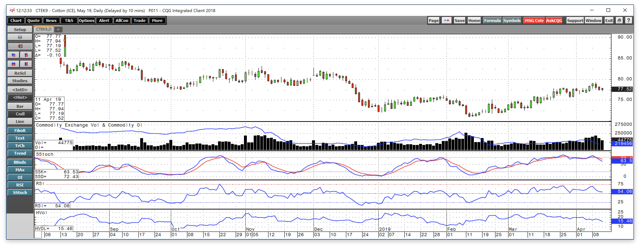Summary
Five consecutive weeks of gains in the cotton futures market.
The monthly chart is looking good.
Floods could cause supply issues, and a trade deal with China could cause demand to rise.
Last year cotton exploded in May.
The WASDE pushes cotton lower which could be an opportunity - BAL for those who do not trade futures.
Cotton can be one of the wildest commodities that trade on the futures exchanges. Before 2010, the price of the fiber never traded above $1.1720 per pound, but in 2011, the price rose to over twice that price when it rose to a record peak at $2.27.
The rally in the cotton futures market was fast and furious, and the dip that followed was equally volatile. Cotton traded to under $1 per pound in 2011 and has not traded above the one buck level since that wild and crazy year.
The price of cotton hit rock bottom in 2016 when the price reached a low at 55.66 cents, and inventories rose to a level where there was enough cotton to produce two pairs of jeans for every man, woman, and child on the planet. Since then, inventories have moved lower, the economy improved, and cotton futures made a series of higher lows and higher highs.
Last May cotton reached a high at 96.50 cents per pound before selling hit the market. The economic slowdown in China caused by trade issues with the US caused the price of the fiber to decline to a low at 69.53 cents in mid-February 2019, but since then the price had been rising and is now flirting with the 80 cents per pound level.
The most direct route for a trade or investment in the price of cotton is via the futures and futures options that trade on the Intercontinental Exchange. However, the iPath Series B Bloomberg Cotton Subindex Total Return ETN product (BAL) seeks to replicate the price action in the volatile cotton futures market.
Five consecutive weeks of gains in the cotton futures market
The price of cotton has been rising over the past weeks and reached just below 80 cents per pound on April 9.


